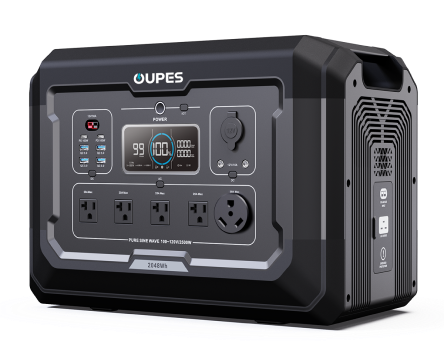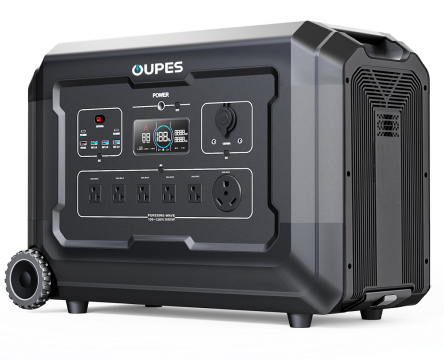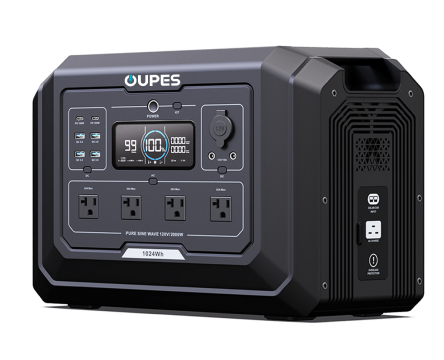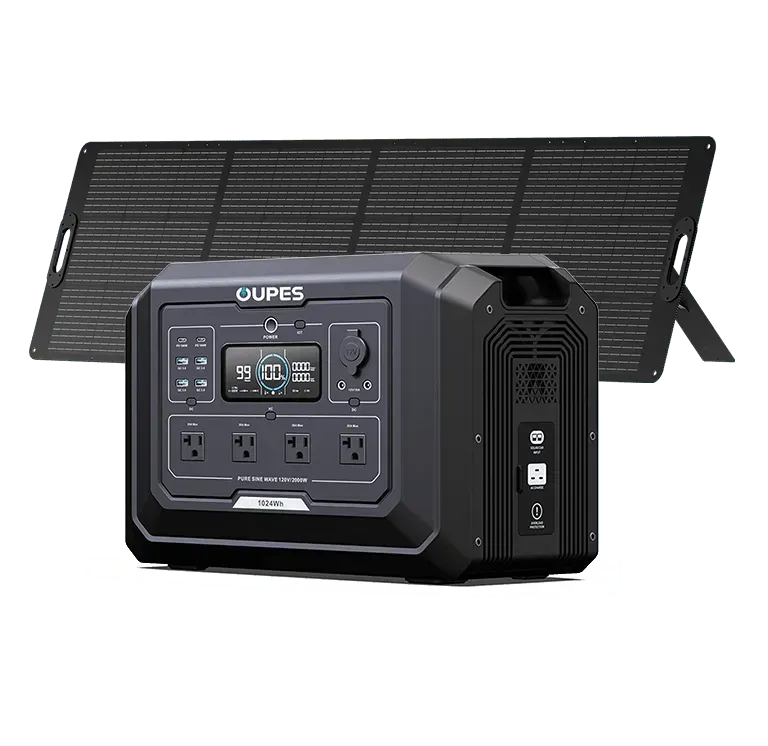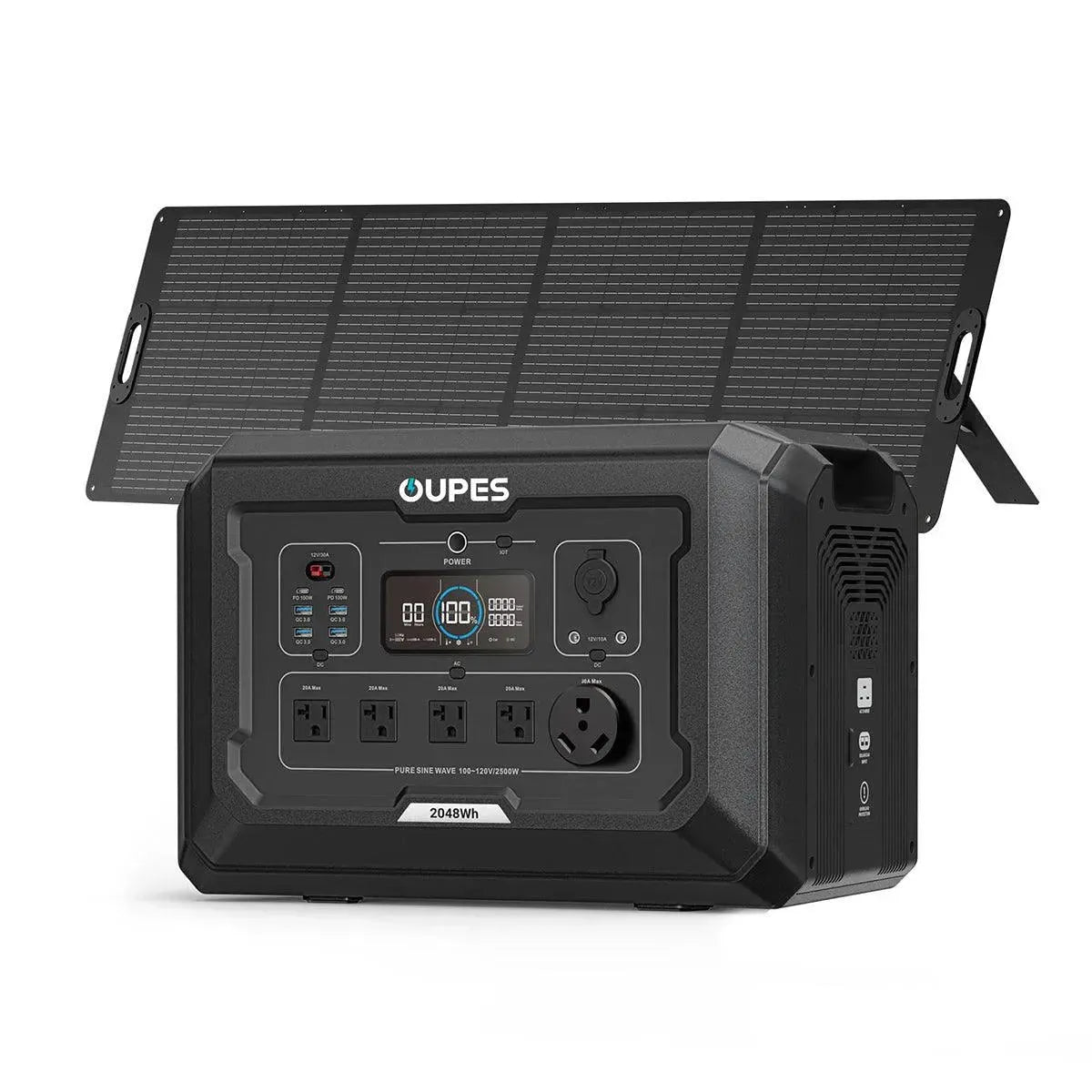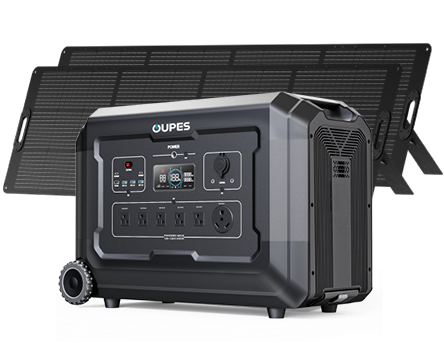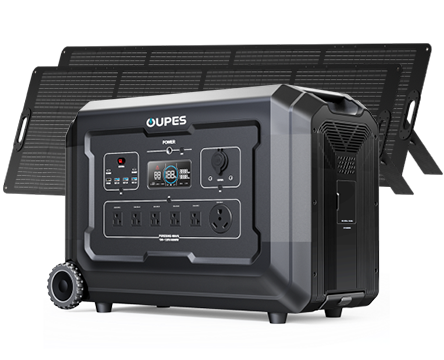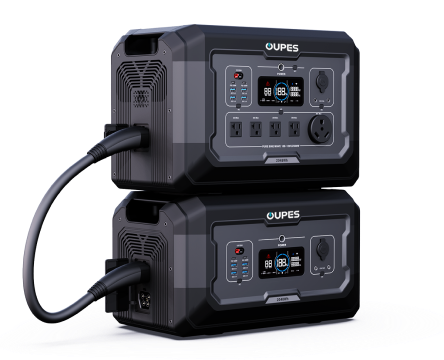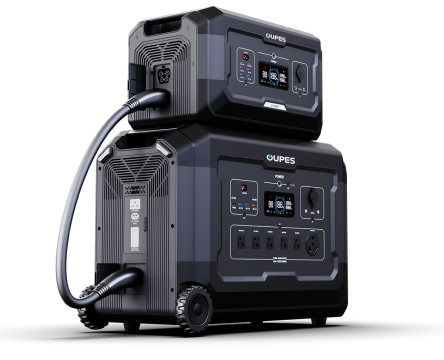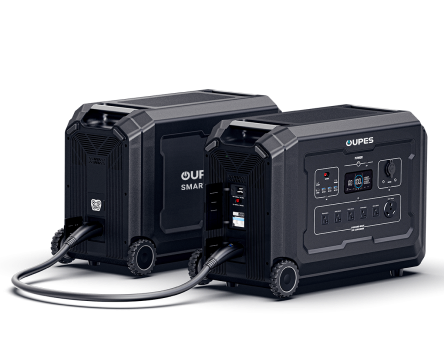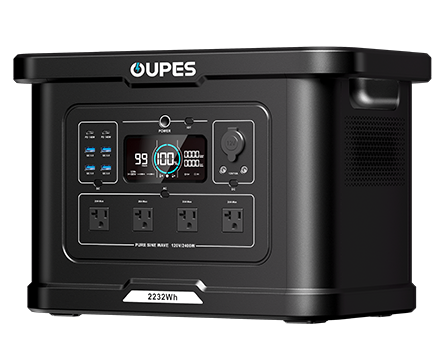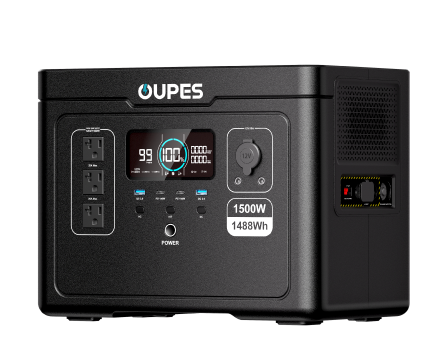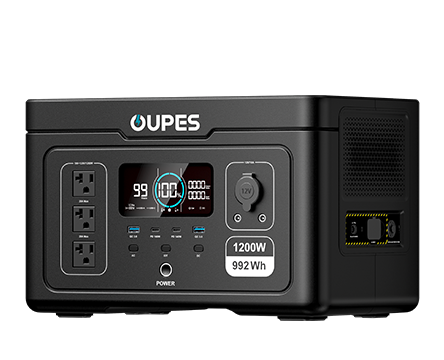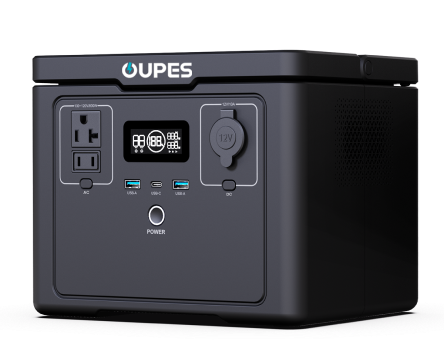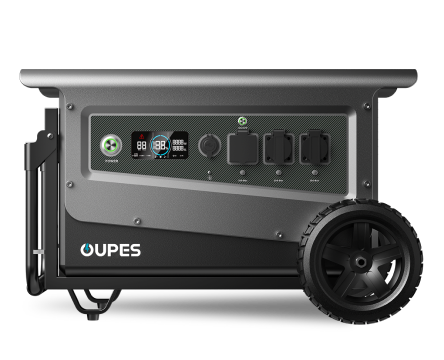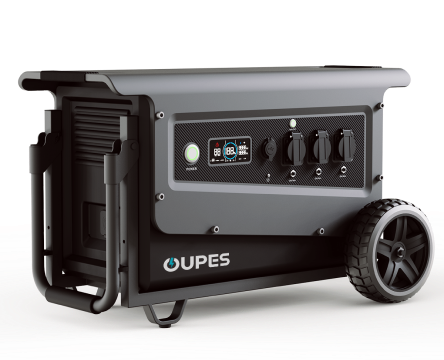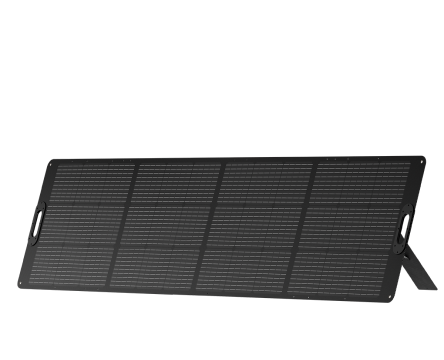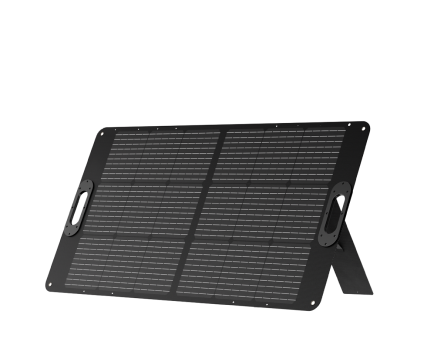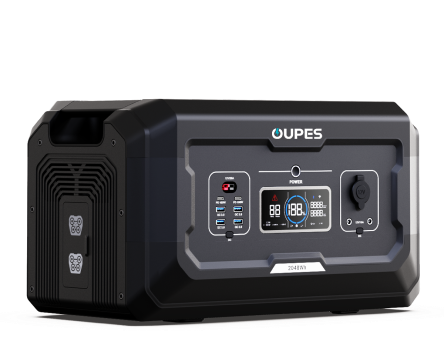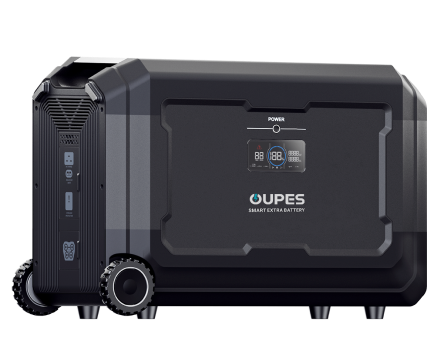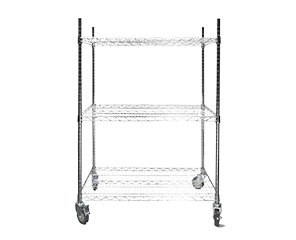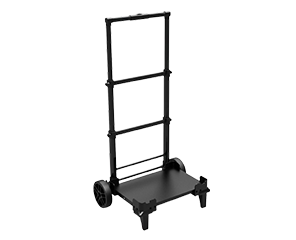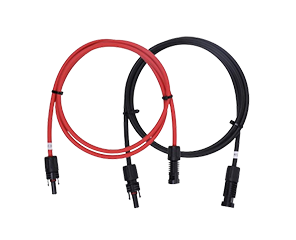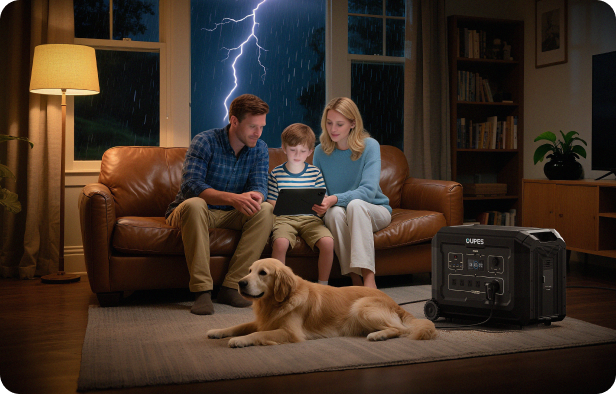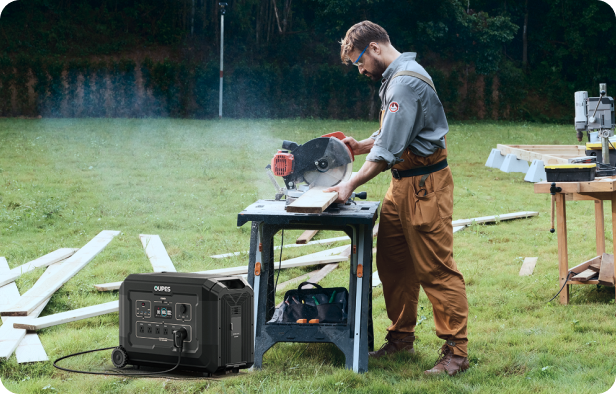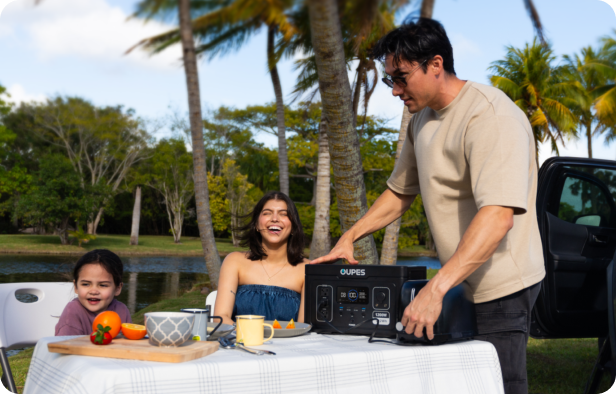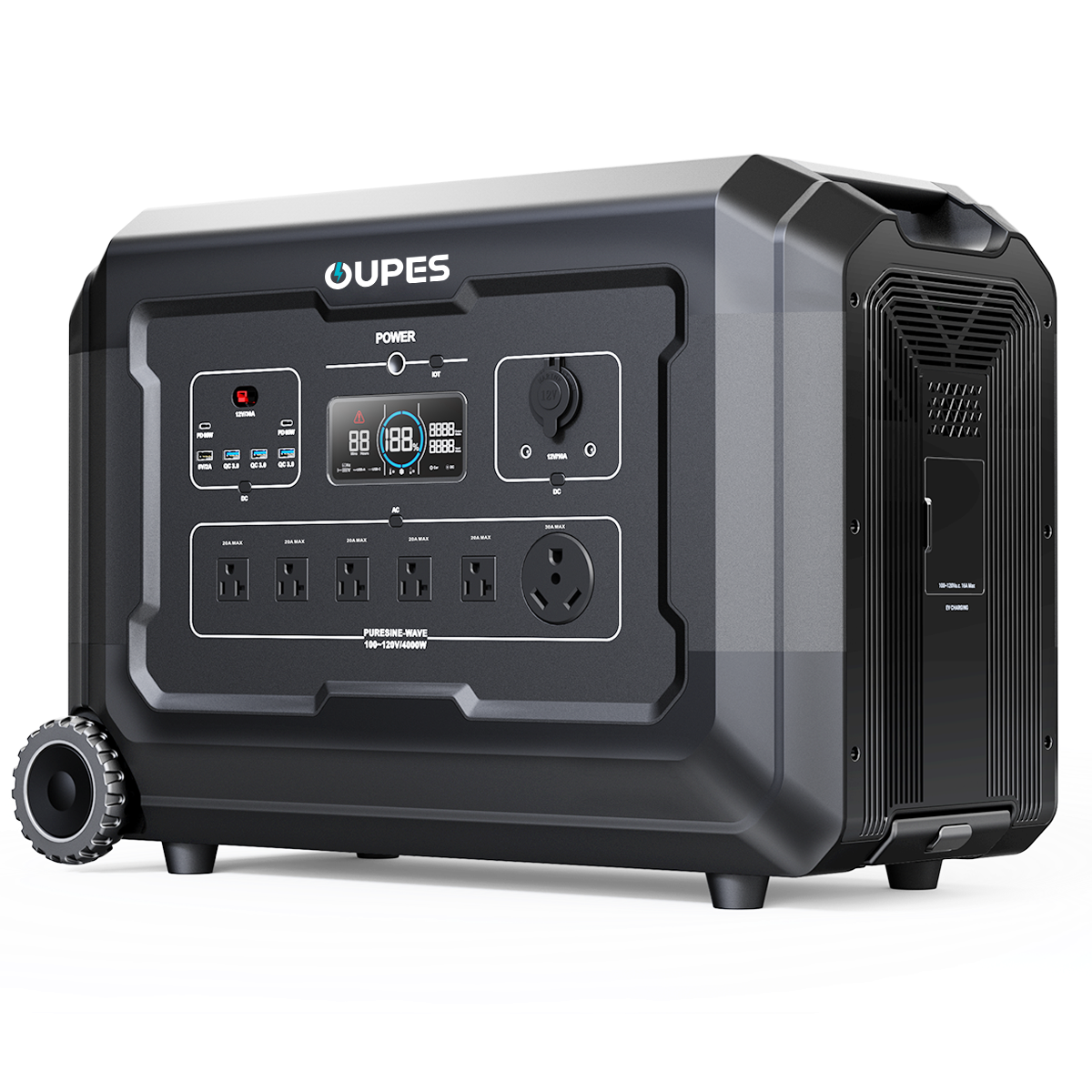
When the cold weather hits, space heaters quickly become one of the most popular appliances in households. Whether you're supplementing your central heating system or using one to warm a specific room, it’s essential to understand how much power they consume. Knowing the typical power draw of a space heater not only helps you estimate electricity costs but also helps you choose the right power station or generator—especially for off-grid or backup power scenarios.
In this article, we’ll break down how much power space heaters typically draw, the factors that influence this draw, how to run one efficiently using a portable power station, and which OUPES models are ideal for this purpose.
What Influences the Power Draw of a Space Heater?
Space heaters come in various shapes, sizes, and types, and these factors significantly influence how much power they consume. Most residential space heaters fall within the range of 750 to 1500 watts. This means that if you're using a heater on the highest setting, you're likely drawing 1500W per hour of operation.
The design and purpose of the heater also matter. For instance, ceramic space heaters are known for rapid heating and moderate efficiency, while oil-filled radiators tend to retain heat longer and cycle on less frequently. Infrared heaters offer directional heat that warms objects and people directly, making them more efficient in certain situations.
Environmental conditions also play a role. If you're using a heater in a poorly insulated space, the unit will work harder and longer to maintain temperature, consuming more electricity. On the other hand, using a heater in a well-insulated, smaller room may reduce the energy needed to achieve the same warmth.
Settings on the heater itself affect power usage. Many models have multiple modes—low (750W), medium (1000W), and high (1500W). Using a lower setting or an energy-saving mode can significantly reduce power draw without sacrificing comfort.
It’s also crucial to consider usage patterns. Running a heater for 2 hours daily at 1500W will draw 3 kWh per day. Multiply that by 30 days, and you're looking at around 90 kWh per month, which can add up quickly on your electric bill or drain your portable power station if you're off-grid.
Understanding these variables helps you make smarter heating decisions and allows you to better match your heating needs with the right energy source—whether that’s your home grid or an OUPES portable power station.
Typical Wattage Ratings of Common Space Heaters
To better understand how much power a space heater typically uses, it's helpful to look at the wattage ratings of common models. Below is a general breakdown:
| Heater Type | Low Setting | High Setting |
|---|---|---|
| Standard Ceramic Heater | 750W | 1500W |
| Oil-Filled Radiator | 800W | 1500W |
| Infrared Heater | 400W | 1000W |
| Micathermic Heater | 750W | 1500W |
As you can see, the majority of heaters max out at around 1500W. This makes them compatible with most 15-amp home outlets but also places them at the upper limit for many portable power solutions. For instance, using a space heater with a small generator or low-wattage battery system could lead to shutdowns or overheating if not managed correctly.
If you intend to use a space heater in an RV, off-grid cabin, or during a blackout, ensure that your power supply can handle at least 1500W of continuous output. For longer durations, higher-capacity units like the OUPES Mega 3 Home Backup & Portable Power Station (3600W, 3072Wh) or OUPES Titan 5 Portable Power Station (4000W, 5040Wh) are ideal options.
These models can support a full-size space heater on high settings for extended periods while also powering other essential devices.
Can a Portable Power Station Run a Space Heater?
The short answer is yes—but the right match is key. Many portable power stations are not designed to support continuous loads of 1500W, which is the typical draw of a space heater. Attempting to run such a heater on an underpowered device can result in overloads or reduced runtime.
For occasional or emergency use, smaller heaters (400–800W) can be paired with compact power stations like the OUPES Exodus 1200 Portable Power Station (1200W, 992Wh). This model is a great choice for running low-wattage space heaters for shorter durations, such as heating a tent, bedroom, or small workspace for a few hours.
If your goal is to maintain heat overnight or across multiple days, you’ll need something much more robust. This is where the OUPES Mega 5 Home Backup & Portable Power Station (4000W, 5040Wh) becomes essential. With its high-capacity battery and powerful inverter, the Mega 5 can comfortably run a 1500W space heater for 3–4 hours on high, or even longer when used intermittently or on a lower setting.
Here’s a basic estimate for heater runtimes based on power station specs:
| OUPES Model | Power Output | Battery Capacity | Estimated Runtime (1500W Heater) |
|---|---|---|---|
| Exodus 1200 | 1200W | 992Wh | ~40 minutes |
| Mega 3 | 3600W | 3072Wh | ~2 hours |
| Titan 5 | 4000W | 5040Wh | ~3.5 hours |
These estimates assume continuous use on the highest setting. In real scenarios, heaters cycle on and off as temperatures fluctuate, so actual runtimes may be longer. Using a thermostat or timer can help extend battery life significantly.
How to Maximize Heating Efficiency with a Power Station
When using a space heater with a portable power station, efficiency is everything. Here are a few practical tips to get the most out of your energy source:
Use Insulation: Simple measures like weather stripping, door draft stoppers, and heavy curtains can trap heat more effectively and reduce how hard your heater needs to work.
Choose the Right Heater: A 750W radiant or infrared heater may be enough for a small space and consume half the power of a 1500W fan-forced unit.
Use Lower Settings: Operating a heater on medium (1000W) rather than high can stretch battery life by 30% or more. Pair this with extra blankets or thermal clothing if needed.
Limit Run Time: Don’t leave the heater on longer than necessary. Consider running it just long enough to warm the space, then turning it off while maintaining warmth with insulation or body heat.
Charge Smart: If you're using an OUPES power station that supports solar charging, such as the Mega or Titan series, use daytime solar input to replenish energy for overnight heating. This is especially useful for off-grid setups or during power outages.
These strategies not only make your power supply last longer but also make your space heater a more sustainable and cost-effective heating solution.
Conclusion
Understanding the power draw of space heaters is essential whether you're connected to the grid or relying on a backup power source like a portable power station. With most heaters using up to 1500W, it’s important to match the heater’s power needs with a capable and reliable energy source.
OUPES offers a variety of portable power stations designed to meet these demands. From compact solutions like the Exodus 1200 for short-term, low-power needs to high-capacity models like the Mega 5 and Titan 5 for long-term backup, there's an OUPES power station ready to help you stay warm—no matter where you are.

